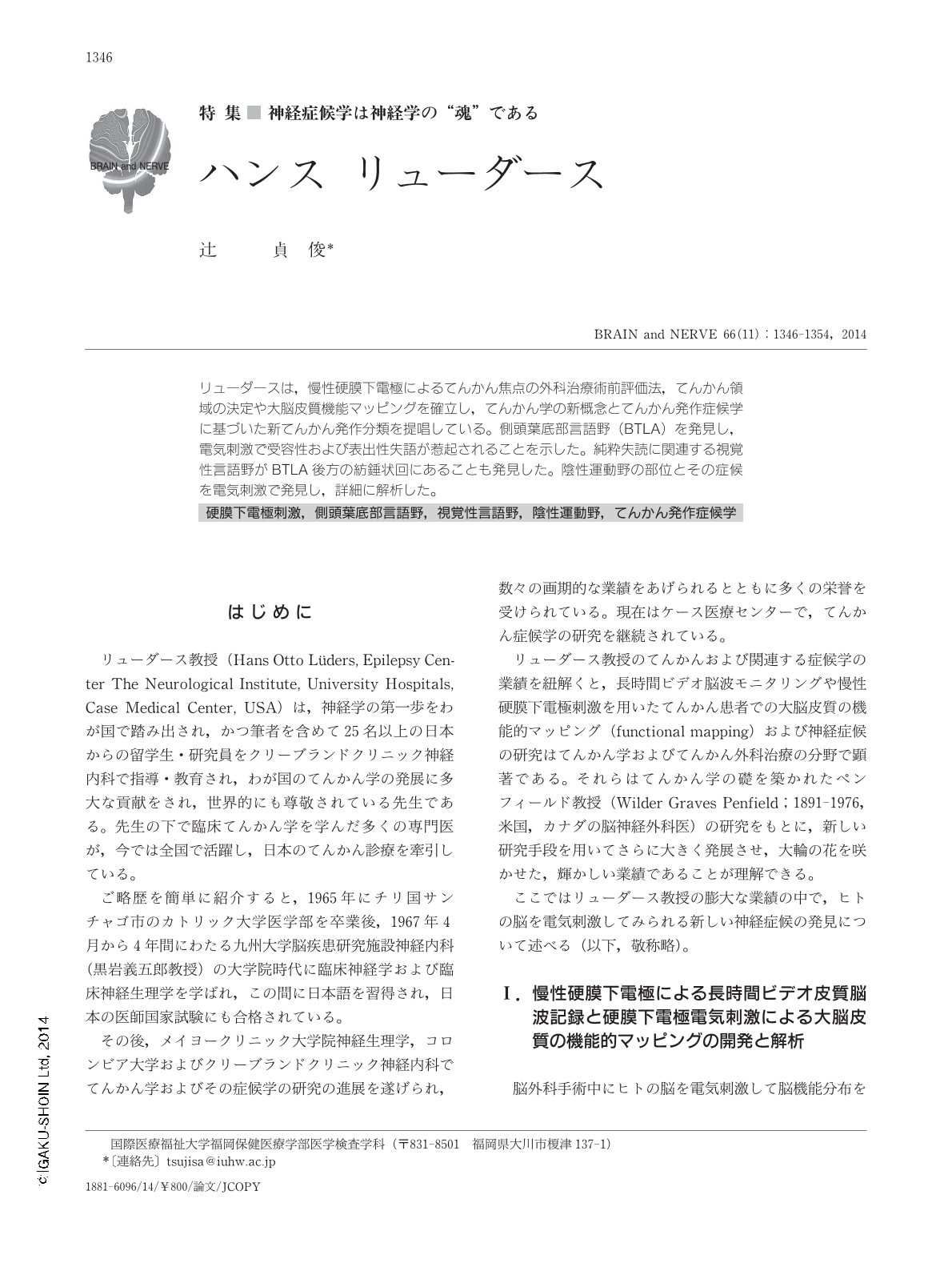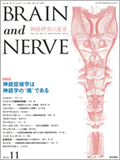Japanese
English
- 有料閲覧
- Abstract 文献概要
- 1ページ目 Look Inside
- 参考文献 Reference
リューダースは,慢性硬膜下電極によるてんかん焦点の外科治療術前評価法,てんかん領域の決定や大脳皮質機能マッピングを確立し,てんかん学の新概念とてんかん発作症候学に基づいた新てんかん発作分類を提唱している。側頭葉底部言語野(BTLA)を発見し,電気刺激で受容性および表出性失語が惹起されることを示した。純粋失読に関連する視覚性言語野がBTLA後方の紡錘状回にあることも発見した。陰性運動野の部位とその症候を電気刺激で発見し,詳細に解析した。
Abstract
Professor Lüders has made significant contributions to Clinical Neurology and particularly to Epilepsy and Clinical Neurophysiology. Some of his most important contributions include the following:
1.He pioneered the use of chronically implanted, large plates of subdural electrodes in the presurgical evaluation of patient who were candidates for epilepsy surgery. These electrodes were used to record epileptic seizures and by electrical stimulation to establish the location of eloquent cortex. Lately he has also advocated the use in the USA of stereotactically implanted depth electrodes for presurgical evaluation of epilepsy patients who had deep seated epileptic foci which were impossible to assess with subdural electrodes. These techniques were imported from Europe.
2.Mapping studies with subdural electrodes led to the discovery of a number of cortical eloquent areas that had not been described before:
a. The basal temporal language area located in the dominant fusiform gyrus.
b. The "negative motor areas" located in the caudal region of the inferior frontal gyrus (bilaterally) and immediately in mesial frontal pre-SMA region (also bilaterally). He concluded that these "negative motor areas" most likely correspond to praxis regions.
c. The dominant posterior fusiform gyrus which plays a crucial role in processing reading material. Stimulation of that area produces "alexia without agraphia".
3.He developed a new classification of epileptic seizures based exclusively on semiological ictal characteristics. With the development of the semiological seizure classification he also defined several new seizure types: a. Dialeptic seizures, b. Hypnopompic seizures, c. Hypomotor seizures.
4.Working with general epilepsy principles, he established the existence of 6 zones that characterize the epilepsies: the epileptogenic zone, the irritative zone, the seizure onset zone, the epileptogenic lesion, the symptomatogenic zone and functional deficit zone.
5.He described the ictal DC (direct current) shift seen at the beginning of focal seizures and its value for localization of the seizure onset zone.

Copyright © 2014, Igaku-Shoin Ltd. All rights reserved.


